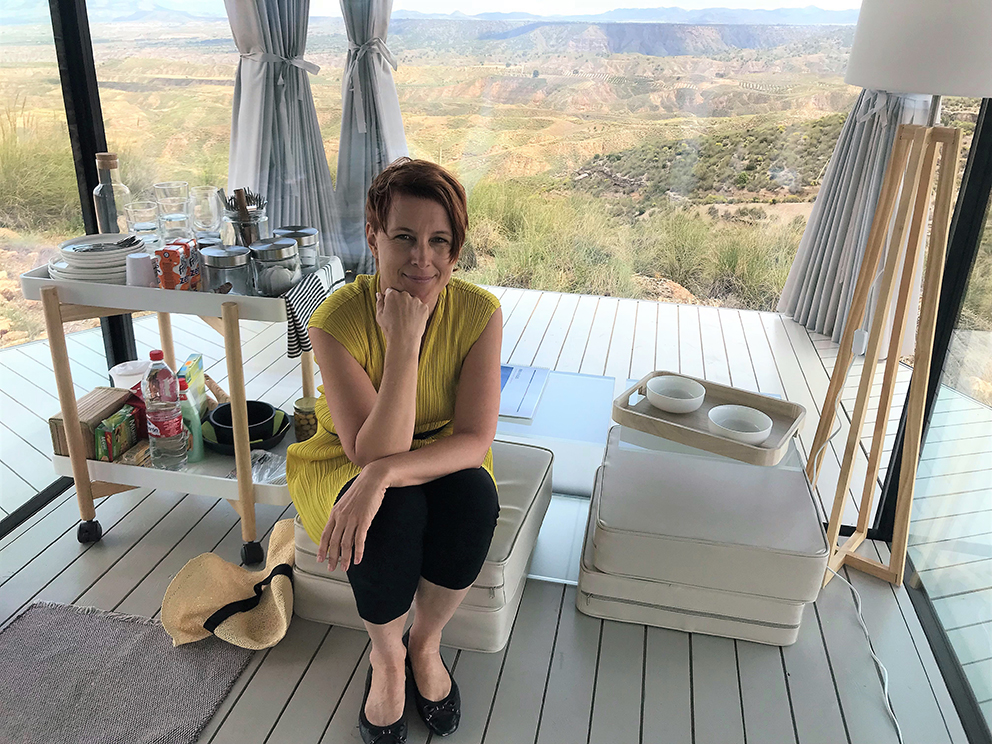The concept of experience tourism is an important shift towards stepping outside the daily routine of mass tourism, but beyond this term, we are now beginning to talk about tourism of emotions, where trips must be “proposals to feel”
The architect Špela Videčnik is an expert in creating unique spaces in exclusive environments to enjoy nature in its purest state
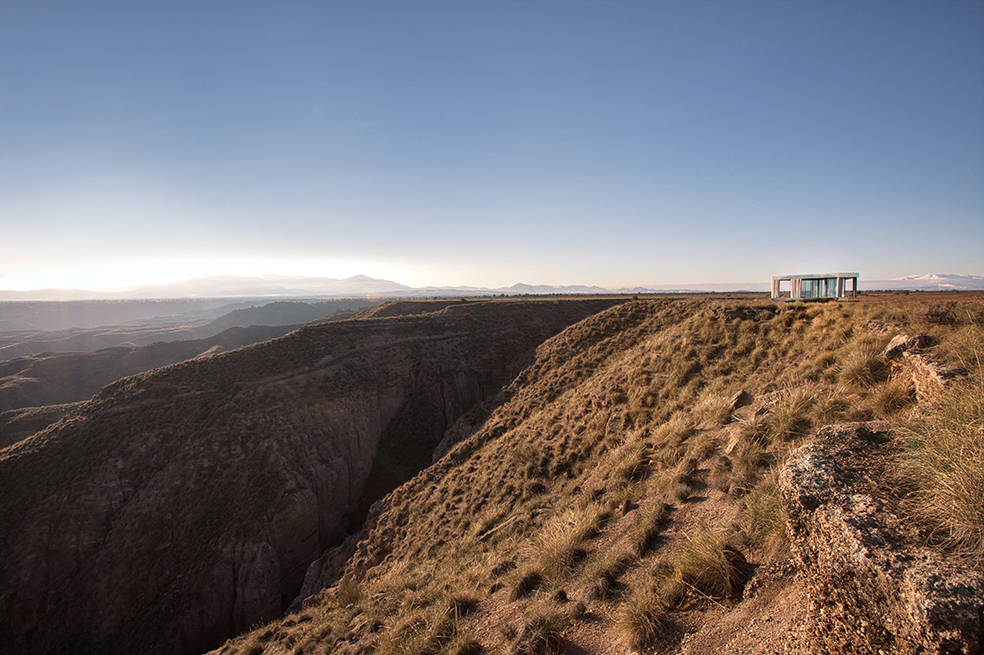
The key to this type of tourism lies in designing unforgettable experiences that help the traveller step back from everyday life by creating memorable memories, such as La casa del desierto, which is located in one of the most adverse and extremes parts of Europe, los Coloraos desert in Gorafe (Granada), where temperatures can reach 50ºC and drop to -10ºC all in the same day.
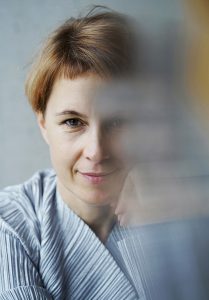
A vast and experienced team of architects led by Špela Videčnik from OFIS Architects, together with glass specialists from Guardian Glass and engineers and energy consultants from AKT II and Transsolar have designed this 20 square meter house in the heart of the desert to demonstrate the importance of glass in architecture, and its properties and behaviour.
A project full of challenges and difficulties that also aims to contribute to the area’s economic and tourist development sustainably and become a model of future building, self-manageable, efficient and environmentally friendly.
On this occasion, we get an insight into the thoughts and concerns of the architect Špela Videčnik, expert in extreme environmental environments and visiting professor at Harvard University, about the creation of a space that’s undoubtedly a milestone in intelligent tourism and sensations in Spain. La casa del desierto offers visitors a once-in-a-lifetime experience in a remarkable place with a comfortable interior space in total harmony and connected with the landscape.
When Guardian Glass challenged you with this project, what was your first thought, your first feeling? Did you find it viable?
It really awoke our interest. In the office, of course we deal with very tough projects but I would say what we enjoy very much, is making small objects like this one in extreme environments. In the last years we build three Alpine shelters in very high mountains, with a lot of snow, and we are testing their resistance and wellbeing of mountaineers who are using them. The glass house in the desert is part of this research but challenges a very different context, climate and material.
From an architectural point of view, what is the main goal an architect is considering when executing a complex project like this?
There are many issues. Most important is to achieve the best performance of the building in extreme conditions, while maintaining the best relation between the inside and the beautiful nature. It is important to keep opened views and establish a contact between the inhabitant and surrounding.
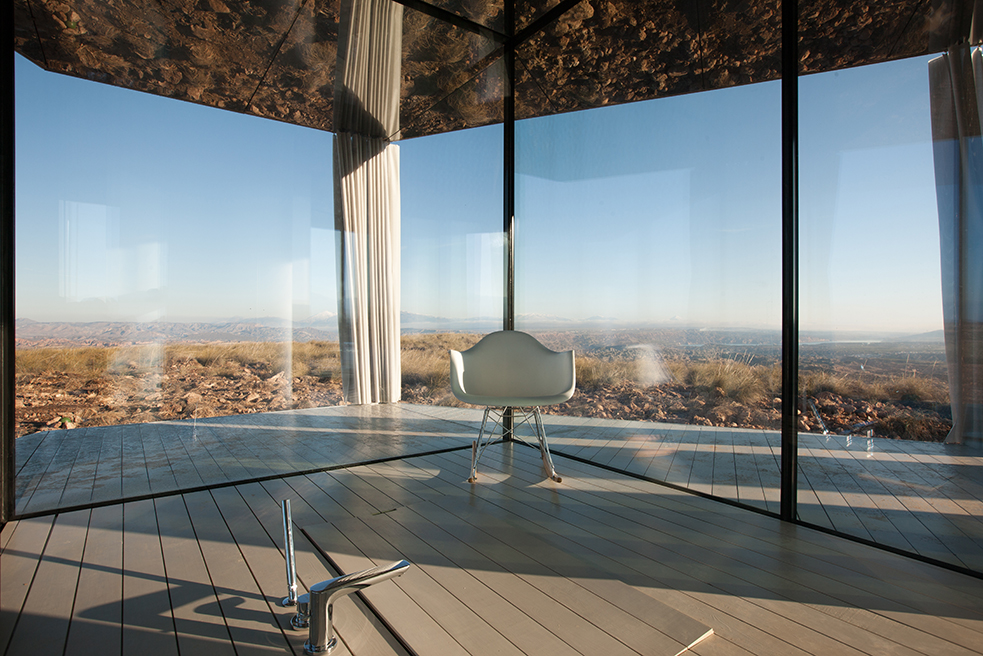
On the other hand, we also have to keep in mind the structural resistance against the strong wind and all the vertical forces and, of course, the thermal characteristics of the building that should work very well in the extreme climate of this region.
Since you are architects specialized in harsh environments, what are the main requirements these constructions should meet in order to become habitable and comfortable? What is the most important thing that you need to take into account?
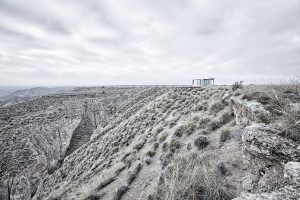
First of all, it is a climate issue. Gorafe has very hot summers with almost no rains, strong sun and winds… and then in winter you can get very cold weather and even snow. There are also extreme temperatures gaps between day and night that we also had to consider. The building needs to face this climate and protect the interior from the sun while maintaining the glass as transparent as possible. We managed to achieve this with help of Guardian experts who defined various coatings on the triple glazing – non visible but yet achieving thermally isolated interior.
We also explored structural aspect of glass – to have glass walls also as structural element. There are no columns in this building made either by steel or wood. The roof with all its heavy PV elements is only supported by glass.
In addition, “The house of the desert” is an energy efficient and self-sufficient building, of almost zero consumption. What role does glass play in this?
Glass plays an important role in this building. In our projects we like to research and test different types of materials. Glass is the hero of our project and we enjoyed challenging it to its limits. Creating a glass house is playing with transparencies and reflections…
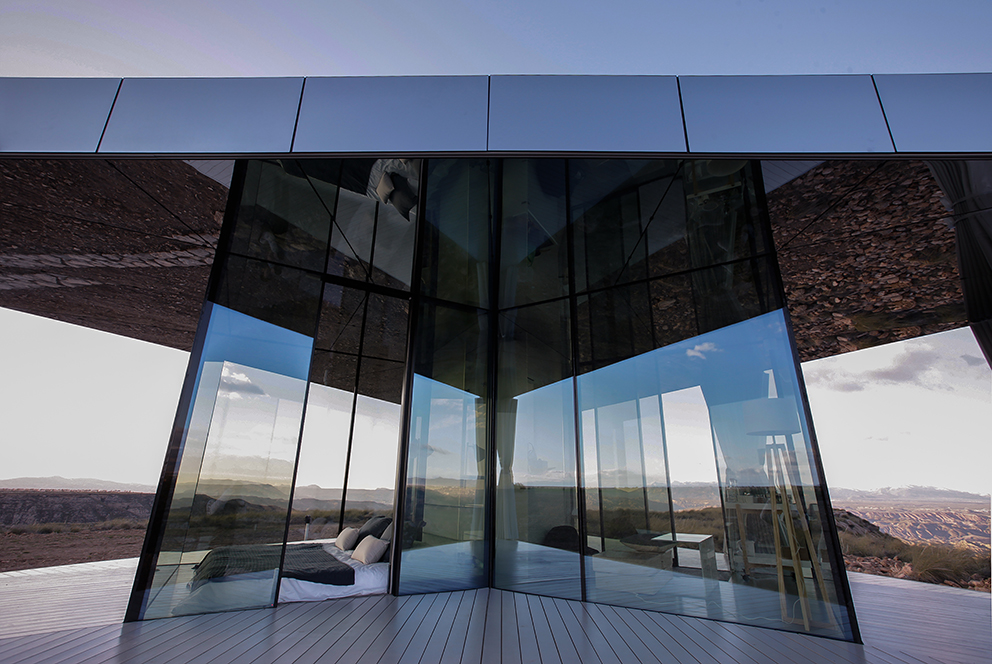
Then it is about testing is thermal characteristic – to protect the interior of getting to hot in summer and keep warm interior in winter. Third challenge was creating a building with no other structure than glass. No columns, no steel, pure transparency.
Beyond the use of Guardian Glass in the harshest environments, what are the benefits of this kind of glass for home windows?
Glass – transparent division between interior and exterior, plays a significant role in architecture. Whenever we design someone’s home, either a family house or apartment inside a housing block we try to establish a strong connection between the apartment and the nature. It is important for each home to have a piece of outside space. Through a large window someone can connect with terrace, balcony or garden or simply just the world outside.
We always create windows as large glass walls, even in low budget projects, because we believe it is important that the home has no border between interior and the nature, have lots of sun and light and that this border is invisible. This we can achieve with high quality glass.
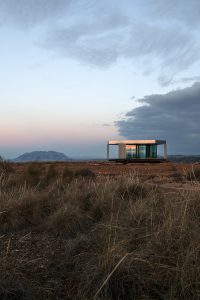 How was the fieldwork in Gorafe desert? Architecturally speaking, how would you value this territory of Spain?
How was the fieldwork in Gorafe desert? Architecturally speaking, how would you value this territory of Spain?
It is a beautiful wild environment, a natural park. We were impressed by the diverse, rich landscape and also found interesting vernacular architecture – underground caves. It was the way for people to adapt to this harsh climate and now, the “House of the desert” is right the opposite.
How important is it, in a project like this, to have a good communication and coordination process between the different professionals involved?
It is extremely important. We collaborated intensely together with our sustainable engineers, a company -Transsolar- from Germany, and our structure engineers -AKT II- from London to explore potential of living in a glass house in extreme climate.
We also got a very good support from Guardian technicians, especially Tamás Kovács, who was coming back to us calculating the proper thicknesses to achieve structural supports and select the various types of high performance glass to create the combination that don’t allow sun to enter the house while it still has the effect of an extremely transparent glass.
How was your professional experience working with Guardian Glass experts and technicians?
We worked with Guardian Glass for several years in very different buildings. I would maybe mention just two because they are diverse.
We have just completed a glass tower in Ljubljana city center- Intercontinental Hotel. There is no external sun shading in this tower due to the wind and Ljubljana also has harsh climate with hots, sunny summers and cold winters so achieving good thermal characteristics is very important. We had to protect the interior from direct sun but yet wanted façade that is transparent and has no green or grey coating. We used Guardian glass, which is called “invisible”, so the border between the inside and the outside disappears.
A very different project is a shelter on Skuta Mountain, it is a mountain of 2200 meters high, where we did this small object together with our students at Harvard University Graduate School of design. Two main facades of this shelter are completely out of glass that works very well thermally as well as structurally.
And what about the most difficult part of the project?
Being honest I would say maybe that the most difficult part was the bureaucracy, to get solved all the paperwork was a long process.
Now, seriously, the most difficult part came out because we really wanted to achieve a no-column-house. There is timber roof and timber floor and in-between connected only with glass. This connections between these two materials had to be structural and done very precise – and this was hard but the building is now put together and we believe it is working well and hopefully that’s it.



